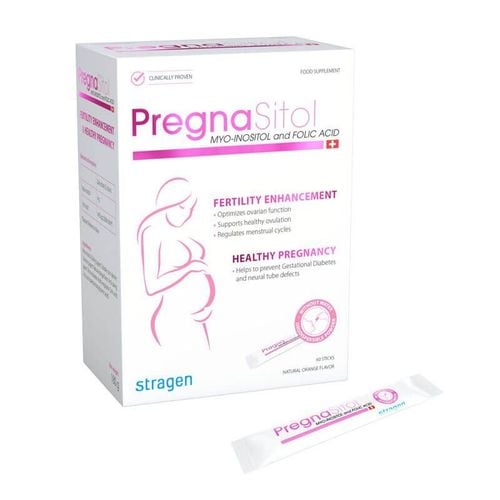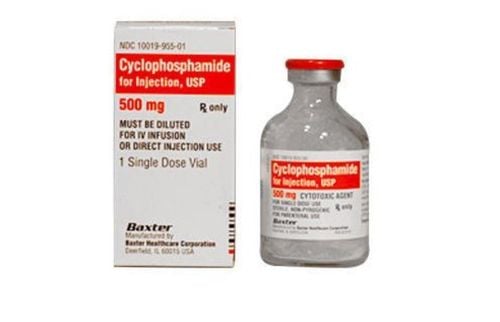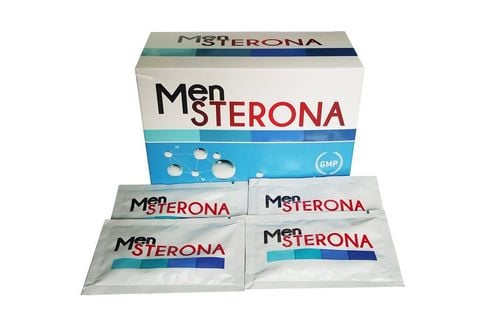This is an automatically translated article.
Vageston 100 is a drug that is used to treat postpartum depression, menstrual disorders, and menopausal syndrome in women. In this article, Vinmec would like to introduce to you the effects of Vageston 100 in obstetrics.1 Ingredients of the drug Vageston 100
Vageston 100 contains Progesterone 100mg, along with a number of other excipients and auxiliary materials with a sufficient amount of 1 tablet.Vageston 100 is made in the form of oral tablets.
2. What effect does Vageston 100 have in obstetrics?
Vageston 100 with the main active ingredient is Progesterone, which regulates the menstrual cycle, supports the development of the mammary glands during pregnancy, and creates a mucus plug in the cervix.3. Indications for the use of Vageston 100
3.1. Using Vageston 100 orally
Gynecology:
Disorders related to progesterone deficiency such as premenstrual syndrome, irregular menstrual cycles due to ovulatory or non-ovulatory disorders, benign breast disease and perimenopause. Women in menopause (in addition to estrogen therapy). Infertility due to luteal insufficiency. Obstetrics:
Threatened miscarriage or prevention of recurrent miscarriages caused by luteal insufficiency; Threatening premature birth.
3.2. Use Vageston 100 vaginally
Treatment of infertility, primary or secondary infertility due to partial or complete failure of the corpus luteum; Threatened miscarriage or prevention of threatened recurrent miscarriage caused by luteal insufficiency.4. Dosage and how to use Vageston 100
Using Vageston 100 orally with an average dose of Vageston 100 is from 200-300mg of progesterone per day divided into 1 - 2 times:
In luteal insufficiency: Vageston 100 is treated for 10 days each cycle, usually from day 1 to 2. 17th to 26th day; In hormone replacement therapy: Estrogen therapy alone is not appropriate, progesterone is used in combination for the last 2 weeks of HRT, followed by discontinuation of all replacement therapy for approximately 1 week; Treatment of Vageston 100 in threatened preterm birth: 400mg of progesterone every 6 - 8 hours depending on clinical results in the acute phase, followed by a maintenance dose (3 x 200mg/day) until the 36th week of pregnancy. Using Vageston 100 vaginal with an average dose of 200mg of progesterone per day (1 tablet of 200mg or 2 tablets of 100mg divided into 2 times), placed deep into the vagina. This dose may be increased depending on the individual patient's response as follows:
In case of partial deficiency of the luteal phase (ovulatory disorder or irregular menstrual cycle): Use 200mg of progesterone per day , 10 days per cycle, usually from day 17 to day 26; In case of infertility due to complete luteal phase deficiency: Initial dose of 100 mg of progesterone on days 13 and 14 of the embryo transfer cycle, followed by 100 mg of progesterone in the morning and evening from day 15 to 25. of the cycle. From day 26 and during pregnancy, the dose should be increased to 100 mg/day weekly to eventually reach a maximum dose of 600 mg/day in 3 divided doses. Maintain this dose until the 60th day; Supplementing the luteal phase in IVF: Start treatment on the evening of the day of embryo transfer with a dose of 600mg/day, divided into 3 times a day; Threatened early miscarriage or prevention of recurrent miscarriages due to luteal insufficiency: Use a dose of 200-400mg of progesterone per day in 2 divided doses until the 12th week of pregnancy.
5. Contraindications to the drug Vageston 100 Do not use the drug Vageston 100 in the following cases:
Hypersensitivity to any component of the drug Vageston 100; Women with unexplained vaginal bleeding; Breast and uterine cancer must not use Vageston 100; Patients with severe thrombophlebitis, active thrombotic disorders or a history of these conditions; Severe liver failure or liver disease; Stillbirth. 6. Drug Interactions CYP450 inducers may increase the excretion of progesterone, thereby reducing the therapeutic activity of Vageston 100; Ketoconazole, another CYP450 inhibitor, reduces the elimination of progesterone, increasing its effect. Progesterone may decrease insulin sensitivity; inhibits the metabolism of ciclosporin and increases blood levels of ciclosporin, even reaching concentrations potentially toxic to the body.
7. Side effects of the drug Vageston 100
Although Vageston 100 may cause local irritation (due to the presence of soy lecithin), no local intolerance has been observed in various clinical studies.
When taken orally, Vageston 100 may cause the following undesirable effects:
Common: Some people have a change in their menstrual cycle, amenorrhea, bleeding between periods or headache; Uncommon: Drowsiness, transient dizziness, occurrence of cholestatic jaundice, pruritus, gastrointestinal disturbances. Transient somnolence and/or dizziness have been reported in patients receiving concomitant low-dose estrogen. These side effects will disappear when the dose of Utrogestan is decreased or the dose of Estrogen is increased without affecting the treatment results; Menstrual cycles may be shortened and bleeding between periods may occur if treatment is started too early, especially before day 15 of the menstrual cycle. Inform your doctor about any unwanted side effects you may experience while using Vageston 100.
8. Notes when using Vageston 100 Do not use Vageston 100 as a method of birth control Your menstrual cycle may be short or bleed between periods if you start treatment with Vageston 100 too soon, especially before day 15 of the cycle; In case of uterine bleeding, do not use Utrogestan until the cause is determined; Because the risks of thromboembolism and metabolism cannot be completely excluded, treatment with Vageston 100 should be discontinued in cases of eye disorders such as loss of vision, diplopia, damage to retinal blood vessels; venous thromboembolism or thromboembolism of any site; people with severe headaches; Patients with a history of thrombophlebitis should be closely monitored; In case of sudden amenorrhea, the patient must check to make sure that she is not pregnant. In general, the majority of spontaneous early miscarriages are due to genetic complications, infectious events or mechanical disorders that can cause miscarriage and premature birth. In these cases, the use of progesterone only works to slow the elimination of dead eggs. Therefore, the use of progesterone should only be reserved for cases of insufficient luteal secretion.
Please dial HOTLINE for more information or register for an appointment HERE. Download MyVinmec app to make appointments faster and to manage your bookings easily.













